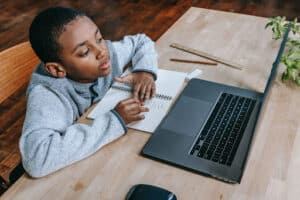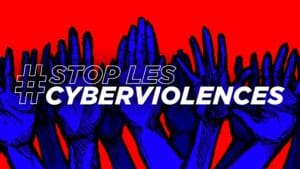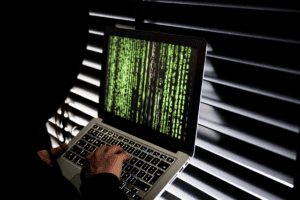For most Canadians, Internet use is ingrained in everyday life—for banking, schooling, remote work, information, services and socialization. Younger generations have grown up with the Internet and this affects the nature of their online interactions and engagements. For instance, in 2023, young people aged 15 to 24 were the most likely to get their news and information from social media (62% compared with 18% of older Canadians).

Frequent social media and Internet use can place younger people at a higher risk of experiencing or being incited to perpetrate online harms and cyberaggression, from exposure to harmful online content to cyber-related hate crimes and other acts of cyberbullying, such as sexual exploitation targeting specific individuals.
In recognition of Pink Shirt Day (February 28), we are publishing this article on cyberaggression among young people, using data from four surveys: the Canadian Social Survey, the Canadian Internet Use Survey (CIUS), the Survey of Safety in Public and Private Spaces (SSPPS) and the Uniform Crime Reporting (UCR) Survey.
More than 7 in 10 young people have been exposed to online hate and violence
Exposure to online hate and violence can come in many forms. Disinformation and misinformation are types of information that intend to manipulate and exaggerate the truth to cause harm, whereas misinformation refers to news or information that is verifiably false, inaccurate, or misleading, without the intention of harm. All three can contain elements or undertones of aggression and can promote or propagate hate.
Based on data from the 2022 CIUS, more than 8 in 10 Canadians aged 15 to 24 (84%) saw information online in the year before the survey that they suspected to be false, a proportion considerably higher than the national average (70%). Despite this exposure, young people were less concerned about online misinformation (41% versus 59%).
Not only were young people more often exposed to misinformation, but they were also more likely to see content that could incite hate or violence. This type of content can consist of but is not limited to, terrorist content or violence toward ethnic groups. In 2022, young Canadians aged 15 to 24 were the most likely of any age group to have seen content online over the previous 12 months that incites hate or violence, with 71% reporting seeing media that may incite hate or violence, higher than the national average of 49%.
Seeing online hate was more common among young Canadians with a disability. Young people aged 15 to 24 with a disability (29%) were over 2.5 times as likely as young people without a disability (11%) to have seen content daily that may incite hate. There were, however, no differences in the overall volume of exposure to online hate by gender or racialized group among young people aged 15 to 24, though the same content can have a different impact on different viewers.
Most police-reported online hate crimes are violent
Cyber-related hate crimes are instances of cyber-aggression and can be linked with other forms of cyberaggression, such as cyberbullying. Cyber-related hate crimes, however, have a distinct dimension of hatred toward a person because of their race, ethnicity, gender identity, religion, or other identity.
Not all cyber-related hate crimes are reported to the police. This can be attributed partly to victims choosing not to, or being unable to tell authorities (e.g., fear of reprisal, fear of not being believed or taken seriously, fear of insufficient police response, being restricted or unable to access or communicate with authorities). While cyber-related hate crimes are underreported, police-reported incidents provide insight into the types of incidents that come to the attention of the police.
Based on data from the UCR Survey, the overall number of cyber-related hate crimes, directed at any age group, has increased from 2018 to 2022, from 92 reported incidents in 2018 to 219 incidents in 2022. Of the cyber-related hate crimes that took place from 2018 to 2022, 82% were violent and 18% were non-violent. Uttering threats (36%) was the most common type of cyber-related violent incident from 2018 to 2022, followed by indecent or harassing communications (29%). Among non-violent cyber-related hate crimes, public incitement of hatred (52%) accounted for more than half of the incidents.
From 2018 to 2022, cyber-related hate crimes targeting Black people and those motivated by a person’s sexual orientation were the most common types of cyber-related hate crimes reported to police, representing 17% each. These were followed by hate crimes targeting the Jewish population (12%).

Nearly one-quarter of victims of cyber-related hate crimes are youth aged 12 to 17
Those most likely to be victims of cyber-related hate crimes differ from those who were most often the target of cyberbullying. Young women and girls were more often the target of online bullying and abuse, especially of a sexualized nature. Yet, from 2018 to 2022, men and boys (53%) were slightly more likely than girls and women (47%) to be the victims of police-reported cyber-related hate crimes. The notable exception was in the teen years and early adulthood when young women accounted for a greater share of police-reported cyber hate crime victims than young men (see Chart 2).
While the median age of victims of cyber-related hate crimes was 32 years, nearly one-quarter (23%) of victims were aged 12 to 17, the highest proportion among all age groups. Those aged 25 to 34 (18%) accounted for the next highest proportion of victims.
Teenage boys aged 12 to 17 are six times more likely than teenage girls to be charged with or accused of a cyber-related hate crime
Much like the perpetrators of online cyber-victimization in general, those accused of cyber-related hate crimes reported to police were more often male, and typically younger. From 2018 to 2022, a vast majority (87%) of people charged with or suspected of cyber-related hate crimes were men or boys.
The median age of cyber-related hate crime perpetrators was 27 years for both males and females. More than one-third (35%) of those accused of cyber-related hate crimes were 12 to 17 and another one-quarter (25%) were 18 to 34.
Although men and women aged 15 to 24 are equally likely to see content that may incite hate or violence, from 2018 to 2022, boys aged 12 to 17 were charged or accused in 30% of cyber-related hate crimes, while girls of the same age accounted for 5% of all those accused or charged.
Young women are most often the victims of online harassment
Other types of online content and behaviour can also be insidious, including those sexually exploiting and harassing victims. These forms of online harms were more often directed at young women. For instance, while the rate of exposure to intimate images or videos that may have been shared without the person’s consent was the same for young men and women, young women are more likely to be specifically targeted. According to data from the 2018 SSPPS, among young people aged 15 to 24, women (11%) were more than three times as likely as young men (3%) to be pressured into sending, sharing, or posting explicit videos, images or messages.
In addition, among young people aged 15 to 24, women (25%) were two and a half times as likely as men (10%) to receive unsolicited sexually suggestive or explicit images or messages. To protect themselves, young women were more likely to block people because of harassment or restrict their Internet access in avoidance. Bullying and harassment are not confined to the Internet—young people who were victims of cyber-aggression were also more likely to have experienced other forms of victimization, such as stalking and physical or sexual assault.
The effects of cyber aggression go beyond the initial experience. The mental health of the victims can be negatively affected and they can experience feelings of alienation, fear and distrust. The rapid and constant sharing of misinformation and violent and hateful media can polarize individuals and communities and foster a space for hate to spread both online and offline.

Note to readers
This analysis was funded by Public Safety Canada.
Cyberaggression can be defined as a form of aggression where the perpetrator uses digital media to harm a person or group of people. Cyber aggression is used to describe a wide range of behaviours.
Canadian Social Survey
The Canadian Social Survey (CSS) collects information on various social topics such as health, well-being, the effects of COVID-19, activities, time use, emergency preparedness, quality of life, energy use, virtual health care and trust. The CSS provides data at the national level (excluding the territories).
The target population includes all non-institutionalized people and non-residents of First Nations reserves aged 15 years and older, living in the 10 provinces of Canada.
Survey of Safety in Public and Private Spaces
The Survey of Safety in Public and Private Spaces (SSPPS) collects information on Canadians’ experiences related to their safety in public and private spaces. Questions are asked about these personal experiences at home, in the workplace, in public spaces and online.
The target population for the 2018 SSPPS was all non-institutionalized people 15 years of age and older, living in the 10 provinces or three territories of Canada.
Canadian Internet Use Survey
The purpose of the Canadian Internet Use Survey (CIUS) is to gather data on Internet access and use, along with the use of Internet-connected smart devices, social connections in the digital age, use of government online services, e-commerce, digital skills, security, privacy and trust, online work and the knowledge and adoption of new digital technologies. The CIUS also measures barriers to Internet access and use, online services, and various digital technologies.
The target population is all people 15 years of age and older living in the 10 provinces of Canada. It excludes full-time residents (residing for more than six months) of institutions.
The CIUS was sponsored by Innovation, Science and Economic Development Canada. Numerous other government departments also provided input during the questionnaire content development phase.
Gender-diverse populations were included in CIUS collection but were excluded from the analysis because of data suppression rules.

Uniform Crime Reporting Survey
The Uniform Crime Reporting (UCR) survey excludes victims whose gender is unknown. The option for police to code victims as “non-binary” in the UCR Survey was implemented in 2018. In the context of the UCR Survey, the term “non-binary” refers to a person who publicly expresses as neither exclusively man nor exclusively woman. Given that small counts of victims identified as non-binary may exist, the UCR data available to the public have been recorded with these victims distributed in the “men and boys” or “women and girls” categories based on the regional distribution of victims’ gender. This recording protects the confidentiality and privacy of victims.
Data for the Saint John Police Service are excluded because of incomplete reporting for all years.
A criminal incident may comprise multiple violations of the law. For the analysis of cyber-related violations, one distinct violation within the incident was identified as the “cybercrime violation”. The cybercrime violation represents the specific criminal violation within an incident in which a computer or the internet was the target of the crime, or the instrument used to commit the crime. For the majority of incidents, the cybercrime violation and the most serious violation were the same. Hate crime counts from the UCR Survey include confirmed and suspected hate crime incidents, and the total includes incidents where hate motivation was unknown. Information in this analysis reflects data reported by police services covering over 99% of the population of Canada.






